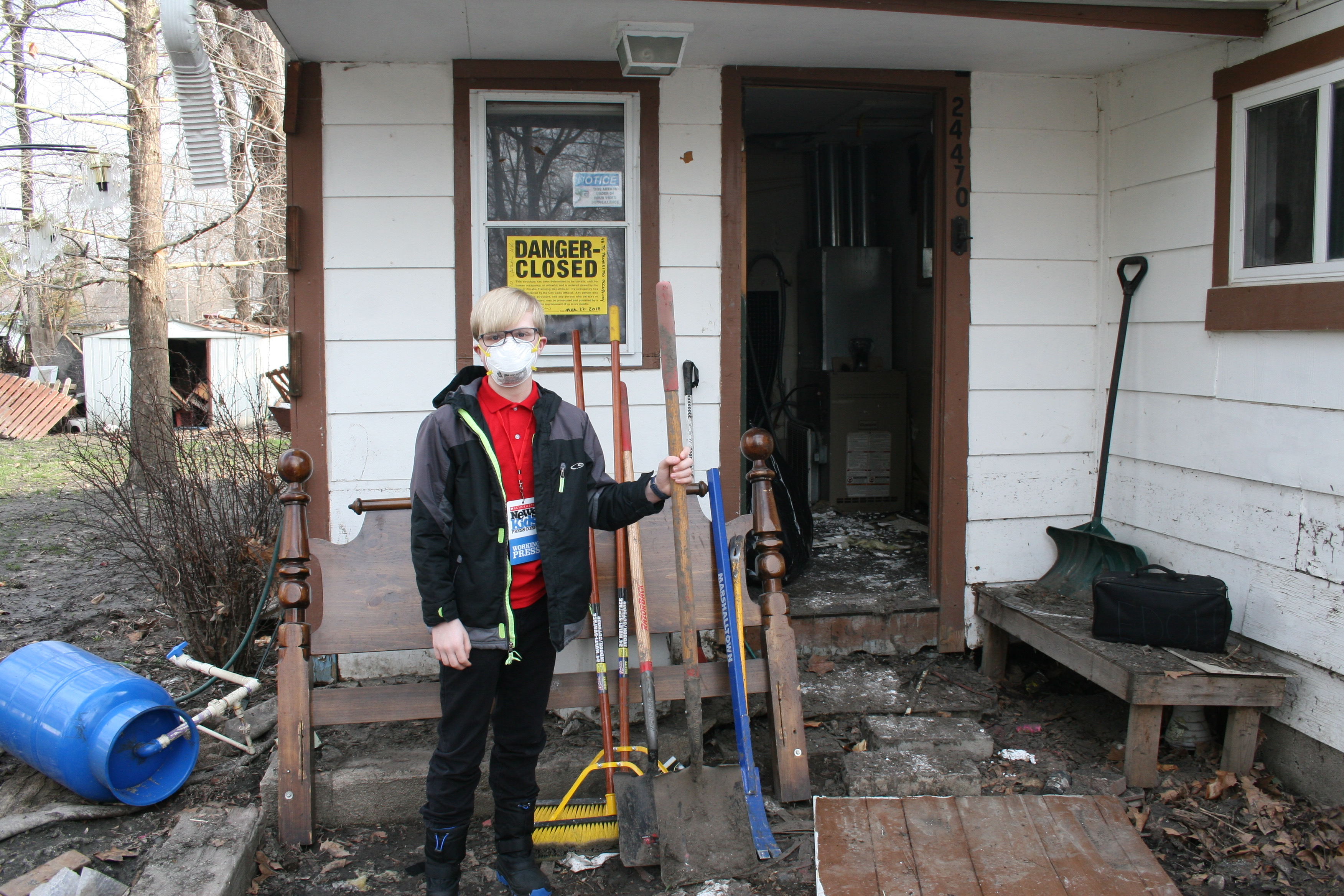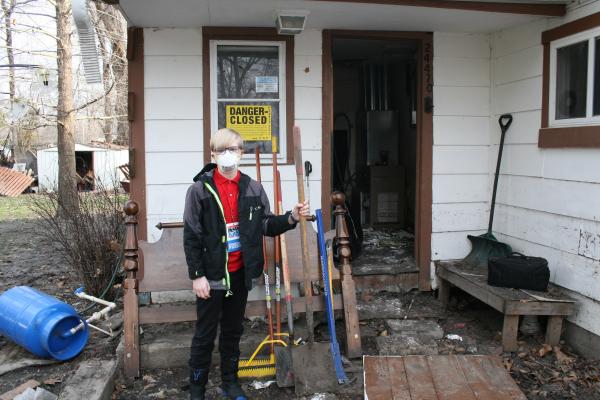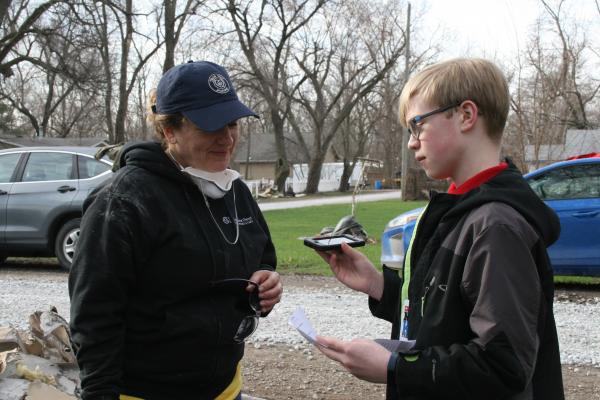KID REPORTERS’ NOTEBOOK
Helping Flood Victims in the Midwest


Brandon outside a home in Valley, Nebraska, where the water came up five feet
In late March, storms and rapid temperature shifts in several Midwestern states led to catastrophic flooding. For Nebraska, it was the worst disaster in the state’s history: 76 of 93 counties have had to apply for aid, with damage estimated at more than $1.3 billion. In my home state of Iowa, 56 of 99 counties are receiving assistance for repairs to homes, farms, and infrastructure.
Although it has been a devastating time for Midwestern farm counties, many volunteers have pitched in despite the dangers. For volunteer Lynn Caniglia, the feeling that comes from “helping families” is all the payment she needs.

Brandon talks with volunteer Lynn Caniglia about her efforts to help families in need.
HELPING TO REBUILD
Jeanie Goodhile raises disabled animals on her farm in Valley, Nebraska. The floods ruined her land and killed all 15 of the alpacas she owned.
“When the water came, I had 20 minutes to save all of my animals,” Goodhile said. “When I tried to get some of the donkeys and alpacas out of their pens, they wouldn’t come out.”
Across the Midwest, three people and more than 2.3 million animals died in the flooding. Goodhile is grateful for the first responders and volunteers who risked their lives to save others.
A Christian nonprofit organization called Eight Days of Hope is among the groups offering assistance. Volunteers from as far away as Ohio and North Carolina rescued people who were stranded and are now providing supplies to those in need and helping to rebuild.

A worker pulls up the floor in a home that sustained extensive water damage.
“I assess homes to see if they’re safe to live in after all of the [damage],” said volunteer Steve Metcalph.
Several steps need to be taken to ensure that a house is safe and habitable after flooding, said supervisor Stephen Coleman. Cleaning out a home and making repairs after flood damage can be a long, complex process.
Roads, bridges, and highways in the Midwest were also damaged. Most of the highways and roads have reopened, but nearly one million homes are still awaiting clean-up.
